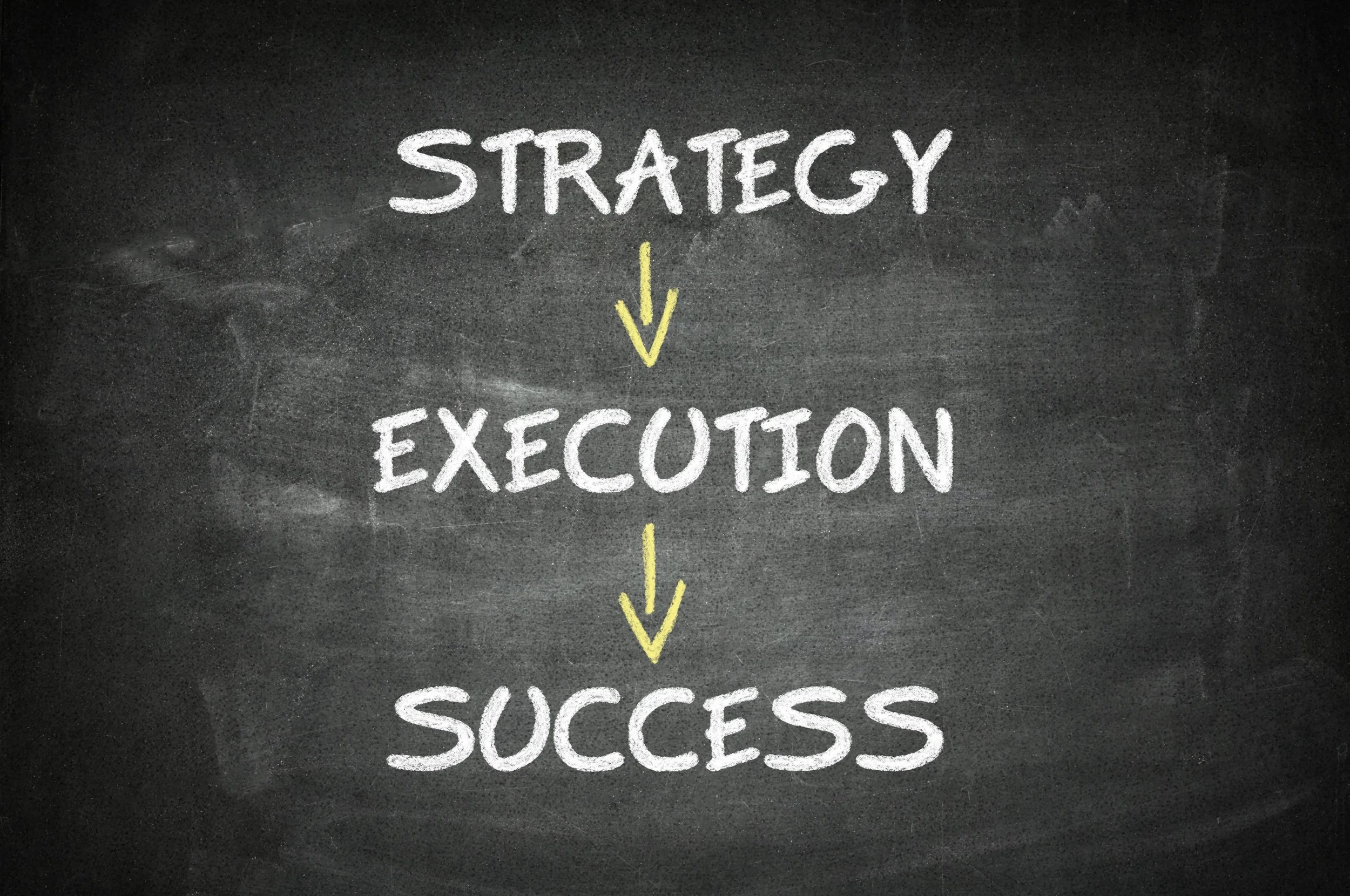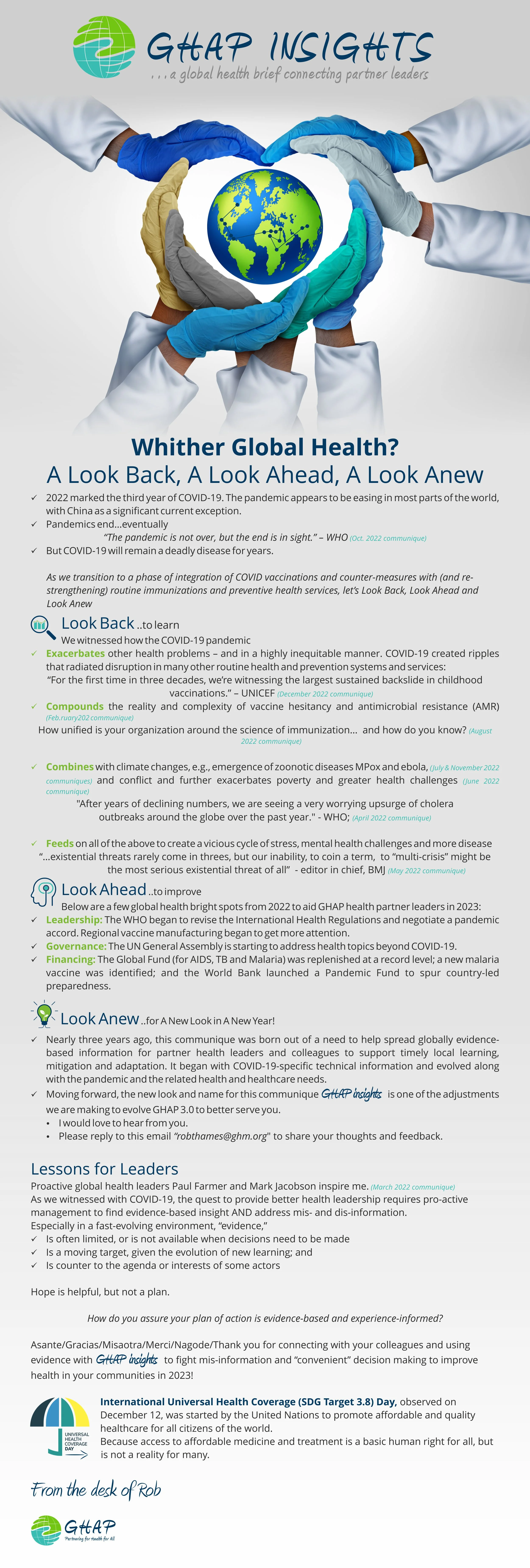“Ending this pandemic, preventing the next one.”
One year ago, WHO Director General appointed The Independent Panel for Pandemic Preparedness and Response (The Independent Panel) in response to a May 2020 World Health Assembly resolution calling for an independent review of lessons learned from the current pandemic and to provide recommendations to improve capacity for global pandemic prevention, preparedness, and response.
Last week at the 2021 World Health Assembly, key recommendations from The Independent Panel’s 86-page report include:
Halo/Hola/Salama/Bonjour/Hello GHAP Partner Leader,
1. Water: Over 70% of the Earth is covered with Water
Despite this, 1 out of 3 people lack safe drinking water and 3 out of 5 lack safe sanitation (WHO). We need water to live.
This month we recognize World Water Day on March 22. In order to accelerate efforts towards meeting water-related challenges, the United Nations General Assembly declared 2018-2028 as the International Decade for Action “Water for Sustainable Development”.
A core focus of World Water Day is to support the achievement of Sustainable Development Goal 6: water and sanitation for all by 2030.
By Rob Thames
“Don’t go walking around like you just hit a triple – when you were born on third base.”
- unknown
“He wants to know why your skin is white and his is black,” clarified my translator. The Tanzanian boy, about 10 years old, was pointing to the skin on his hand and then to mine. His question in this remote kijiji (Swahili for village) was as arresting and profound as the inequities in global health.
My global interdisciplinary health team was in Africa as part of a feasibility assessment in partnership with a Tanzanian team to determine how to improve health in the region near Lake Tanganyika, which borders western Tanzania. While Tanzania is considered a low-resource, less developed country, the western region is considered the least developed area within this ‘third world’ country.
By Rob Thames
This is Part 3B of this three-part series.
Part 3A briefly reviewed four change methods. This Part 3B compares them to elicit insights.
Motivational Interviewing, Kotter’s 8-Step Model, Baldrige Communities of Excellence, and SEED-SCALE, reviewed in Part 3A, were selected to reflect and reveal the wisdom of a range of disciplines, applications at different levels (individual, organizational, community and population) and purposes to aid change practitioners in the thinking and doing of their craft. How can comparing these models elicit deeper insights to affect sustainable change sooner and better?
By Rob Thames
This is Part 3A of this three-part series.
This Part 3A briefly reviews four change methods and Part 3B will compare them.
“I have no idea how to change anyone. But I carry around a long list of people in case I ever figure out how.” - Anonymous
Eliminate four billion dollars of waste from a large healthcare system next year. Increase the CMS TPS (Total Performance Score) for a hospital from the national average of 38.1 to 60 in two years. Reduce maternal, child and infant mortality in Nigeria by 50% in three years. These are large-scale improvement goals – at healthcare system, hospital and population health levels, respectively.
By Rob Thames
This is Part 2 of a three-part series
“Help! I need somebody! Help! Not just anybody. Help!” – The Beatles
When a cry for help begs a response, how do we assure that productive help, not just good intention, actually happens?
When faced with failure, what does a responder do? As an expert/advisor, you have a choice: correct the specific failure or strengthen the system (Taylor, Just and Lasting Change). To make this decision, it is critical to discern: is this an event-induced “disaster” – Ebola, Tsunami, Hurricane – or is it a chronic, systematic, or lifestyle-induced failure? In medicine, the difference is how a physician treats a patient with emergency trauma vs a patient with a chronic disease. The global relief vs development challenge has a healthcare leadership parallel: rescue or strengthen.
By Rob Thames
Part 1 of a three-part series
“We cannot solve our problems with the same level of thinking that created them.”― Albert Einstein
In the U.S., some refer to healthcare system change as an oxymoron. It is complicated. It is hard. And while progress has been made, we have a long way to go.
But if such change in healthcare is challenging in the richest nation, then imagine it in low resource countries. In many sub-Saharan African countries, healthcare must compete with investment in other more impactful determinants of health such as education, food security, and sanitation that, if present, are weakly established. Layer in different governments, languages/dialects, and cultures; include frontier rural locations, tribal influences and religious differences and the challenge to improve health and healthcare in countries such as Tanzania, Madagascar, and Nigeria can feel truly overwhelming.
By Rob Thames
It happens. The organization is off plan…by a lot; and it is not the first time. More than a modest correction or a “wait until next month.” Many factors were likely involved, but the relentless dynamics of the market have overwhelmed a longstanding management team. It is akin to a cyclist who has slipped back from the peloton due to chronic cadence deficit – and now the gap is widening.
When a leadership change is made while the organization is on plan, it is often political. When an organization is off plan, and a leadership change is NOT made, it is often political (or paralysis). But when performance is off plan and the board and/or corporate office makes a CEO change, what are the key considerations?
Sustainable Population Health:
Part B – Catcher or Pitcher?
Part B of this article addresses how growth plans of healthcare systems distinguish population health management from community and public health.
Part A of this article clarified the terminology and implications of Community, Public and Population Health. So what does all this this mean for healthcare system leaders’ growth plans?
Healthcare providers have historically played catcher, “receiving” patients who sought care. Access meant being available when and where patients sought them. The transition from volume-based care to population health management requires a role change of providers from catcher/receiver to pitcher/initiator. The transfer of utilization and intensity (and possibly actuarial) risk to providers requires providers to be economically accountable for care and the health of a population. The good news is that this is a better alignment with the societal view of healthcare as a service (in economics, a ‘good’ with a cost) that is necessary but not a value-add. The bad news for providers is that this is contrary to traditional culture and payment incentives. This change is not a transition, but a transformation that involves many transitions.
















